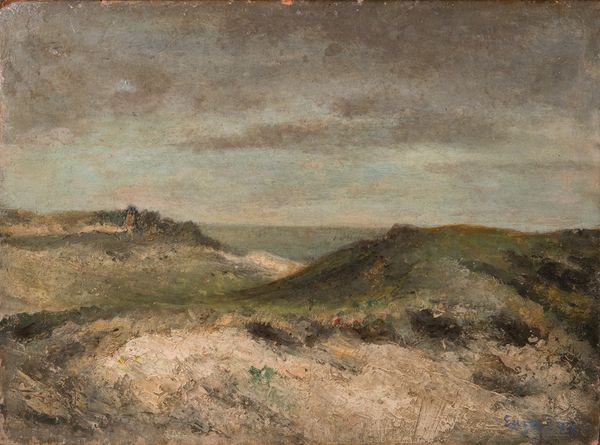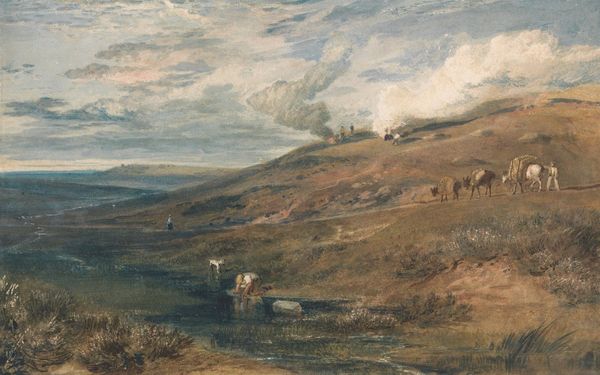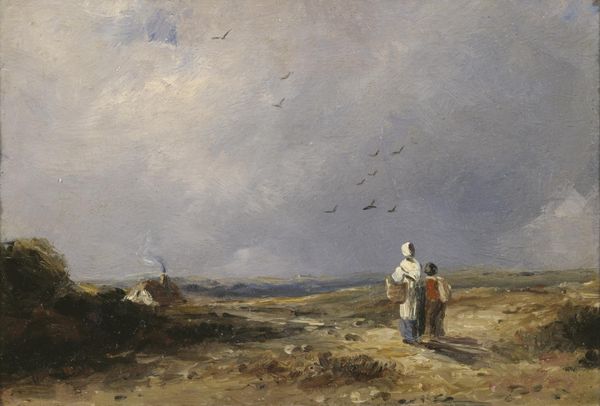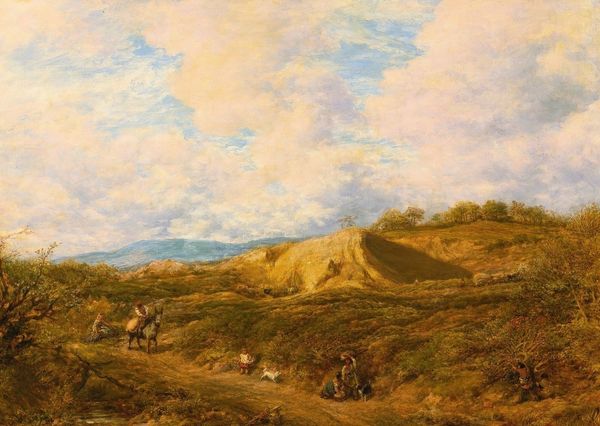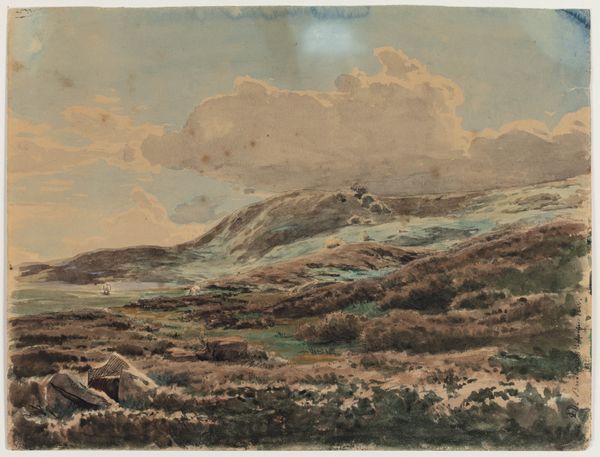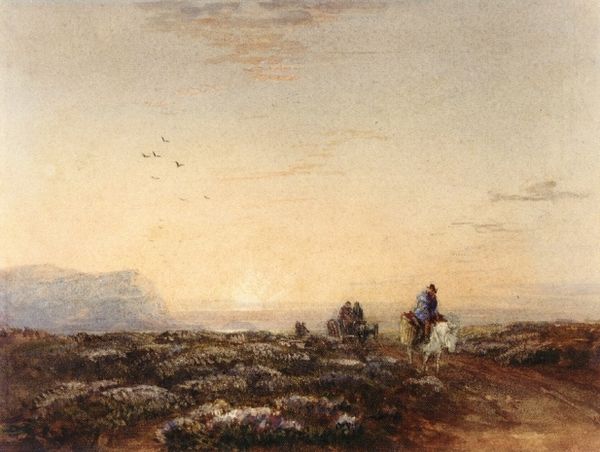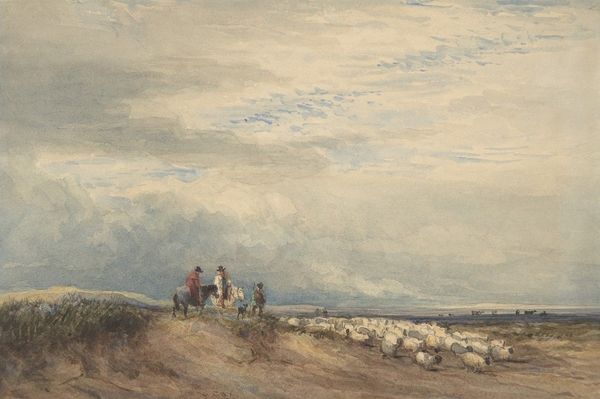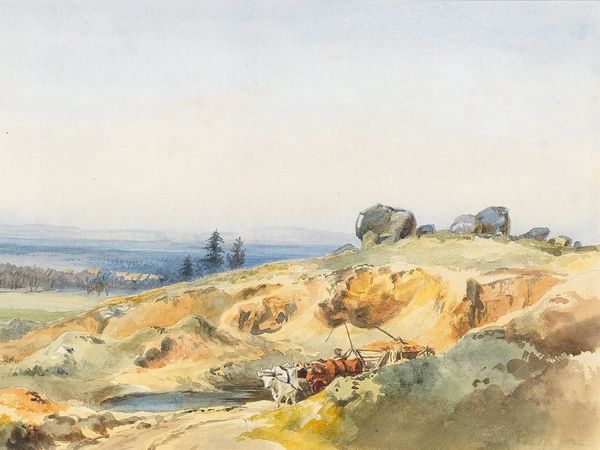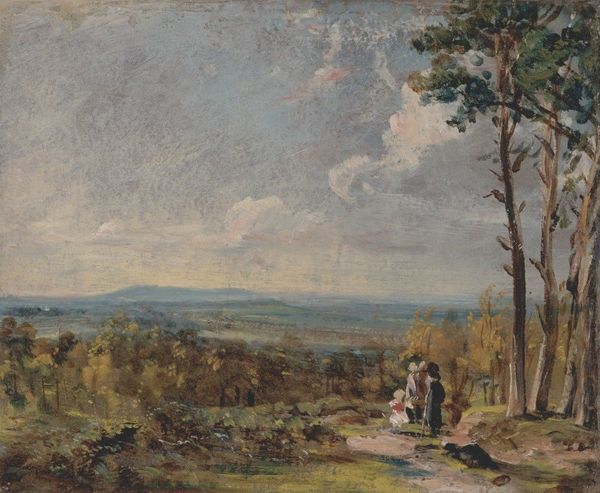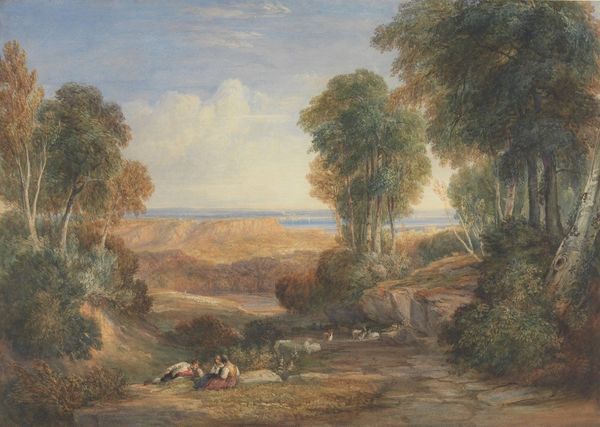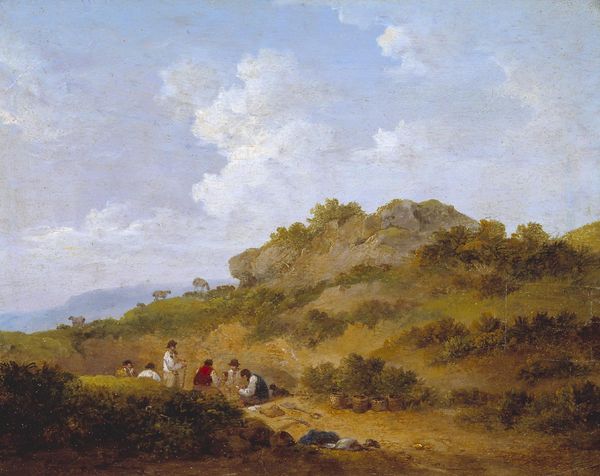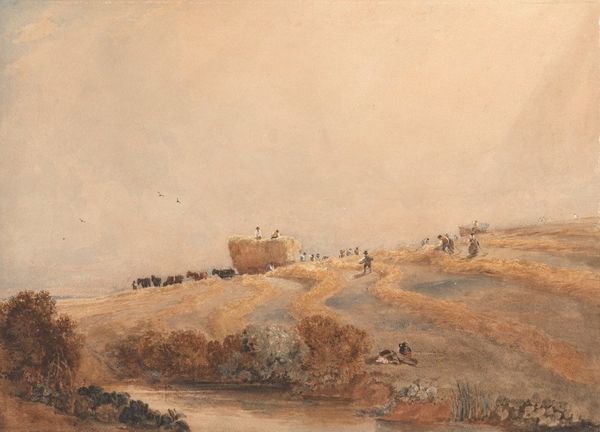
Copyright: Public Domain: Artvee
Curator: Ah, another tranquil scene. This watercolor, "Heath Scene," by David Cox, painted sometime between 1875 and 1880, really captures the late romanticist’s affection for the English countryside. Editor: It feels unresolved, like a memory fading at the edges. The muted colors create this wistful, almost melancholic mood, wouldn’t you say? The way the wash blurs the horizon line suggests the impermanence of things. Curator: Absolutely. Notice how the heath itself is rendered? The browns and ochres aren't just colors; they speak of the deep connection the English had with their land. The figures almost blend in with their surroundings, suggesting we're all just part of this greater landscape narrative. It’s more than just representation; it's symbolic belonging. Editor: But even that symbolic belonging feels destabilized by the compositional choices. The sky dominates so much of the picture plane. It almost weighs down the land. Then, you have this flock of birds. Are they a sign of hope, a suggestion of freedom, or do they suggest impending change, a departure from what we know? I am unsettled by them. Curator: Or perhaps the birds speak to something even older, pagan maybe? Bird omens were important to the Celtic Britons and other European groups, suggesting this picture carries more historical cultural memory than might meet the eye. Editor: An intriguing point, but I’m struck, as well, by how Cox has flattened the perspective, pushing everything up toward the picture plane. It is as if he wants to stress the two-dimensionality, denying the illusion of deep space, forcing our eyes to acknowledge the materiality of the painting itself. Curator: That's one interpretation, certainly, but for me, the way the watercolor bleeds and blends, it invokes this kind of elemental, dream-like world. These aren't literal figures on a path, they're archetypes in a landscape that represents our internal world. Editor: Well, whatever world it is, Cox gives us just enough visual information to spark our imaginations. There is no hard, definitive edge in the artwork, just atmosphere and open possibility. Curator: Indeed, it gives us food for thought, showing the simple profundity that can be found in the pastoral English landscape.
Comments
No comments
Be the first to comment and join the conversation on the ultimate creative platform.
